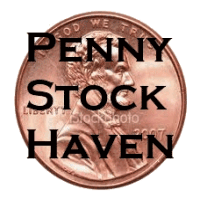On Thursday, August 9th, Implant Sciences
announced the sale of its portable Quantum Sniffer™ QS-H150 into the Middle East for VIP protection. This program is led by Dr. Darryl Jones, Implant Sciences’ VP of Sales and Marketing, who also led Safran Morpho Detection, a leading detection & security company, where Dr. Jones brought hundreds of millions in sales to the company portfolio of explosive trace detector products.
VIP protection is just one of many possible revenue streams for Implant’s line of security products. As you may be aware, the
highly-anticipated TSA certification at the end of this month for Implant’s Quantum Sniffer™ will open doors for IMSC to sell products
directly to government entities and other public, and private, organizations who value the Transportation Security Administration’s voice. In the US alone t
here are thousands of high-net-worth celebrities, politicians and businessmen that could then consider using Implant’s products for personal protection:
Among the upper reaches of the 1%, however, the U.S. still leads the world. While the number of ultra-high-net-worth households (having more than $100 million) declined in 2011 from 2,989 to 2,928, the U.S. was still well ahead of second-place Britain, which remained unchanged with 1,125.
With QS-H150 priced at approximately $33,000 (see
here and
here ) we estimate Implant’s revenue stream from product sales to individuals at $15M/annum, in the United States alone. This estimate is conservative and could be double or even triple if Implant lands the right endorsement from a well-known
politician or even a celebrity like
Katy Perry or
Lady Gaga .
Once more we’d like to highlight the innovative nature of the Implant’s patented technologies and the advantages of products with functional execution on photonic (
non-radioactive ) ionization. According to a recent publication by
NaturalNews.com TSA airports full-body backscatter x-ray machines are just not safe:
The machines, according to the Alliance for Natural Health, emit x-ray signals that "skim the entire surface of your skin instead of being directed to a localized area of your body, which means that radiation levels could be 10 to 20 times higher than the manufacturer's calculations." The low-level ionizing radiation emitted can also cause skin cancer.
Growing public concern over the dangers of radiation found in airport scanners not only opens the door for Implant’s products but also leads bigger industry detection & security leaders to potentially partner or even acquire IMSC for its proprietary detection technologies. These partnerships could easily be valued north of $250 million judging by global sales in the security/detection segement.
TSA certification is coming. In the meantime we’d like to turn your attention to the most overlooked market for the Quantum Sniffer™ products – China and India.
Implant Sciences has an
established distributor in China,
Beijing Ritchie Link , that consistently sells Implant’s QS-H150 handheld explosives trace detector to various Chinese police departments and bomb squads.
In China, Implant Science’s products are licensed under Transportation Security agreements. A thorough diligence effort for Quantum Sniffer™ certification by the Civil Aviation Administration of China (CAAC) may follow immediately after TSA approval in USA. The Chinese government is known as a “vertical”, which means that once approved IMSC’s products start selling like wild-fire spreading in an open field. This then reflects tremendously in IMSC’s revenues because of the typically large order volumes involved.
Similar certification just happened in India. The government spent months testing Implant’s products and concluded with a preliminary order for $6M worth of product.
The aviation market in India and China, combined, is
far greater than even the United States. This means that even as the company vies for a positive decision from the TSA, there’s a vast
market opportunity abroad too.
[…] with some analysts expecting China alone to build up to 80 new airports by the year 2020. Leading airports in the Middle East, for example, are aggressively expanding capacity (with plans to invest in excess of $33 billion by 2012). Similarly, India is seeking to increase its commercial airports from 80 to over 500 in ten years—with a concurrent $40 billion investment in airport infrastructure—to create a system capable of handling up to four times its current capacity.
IMSC: market capitalization could double in the weeks ahead
 (0)
(0) (0)
(0)